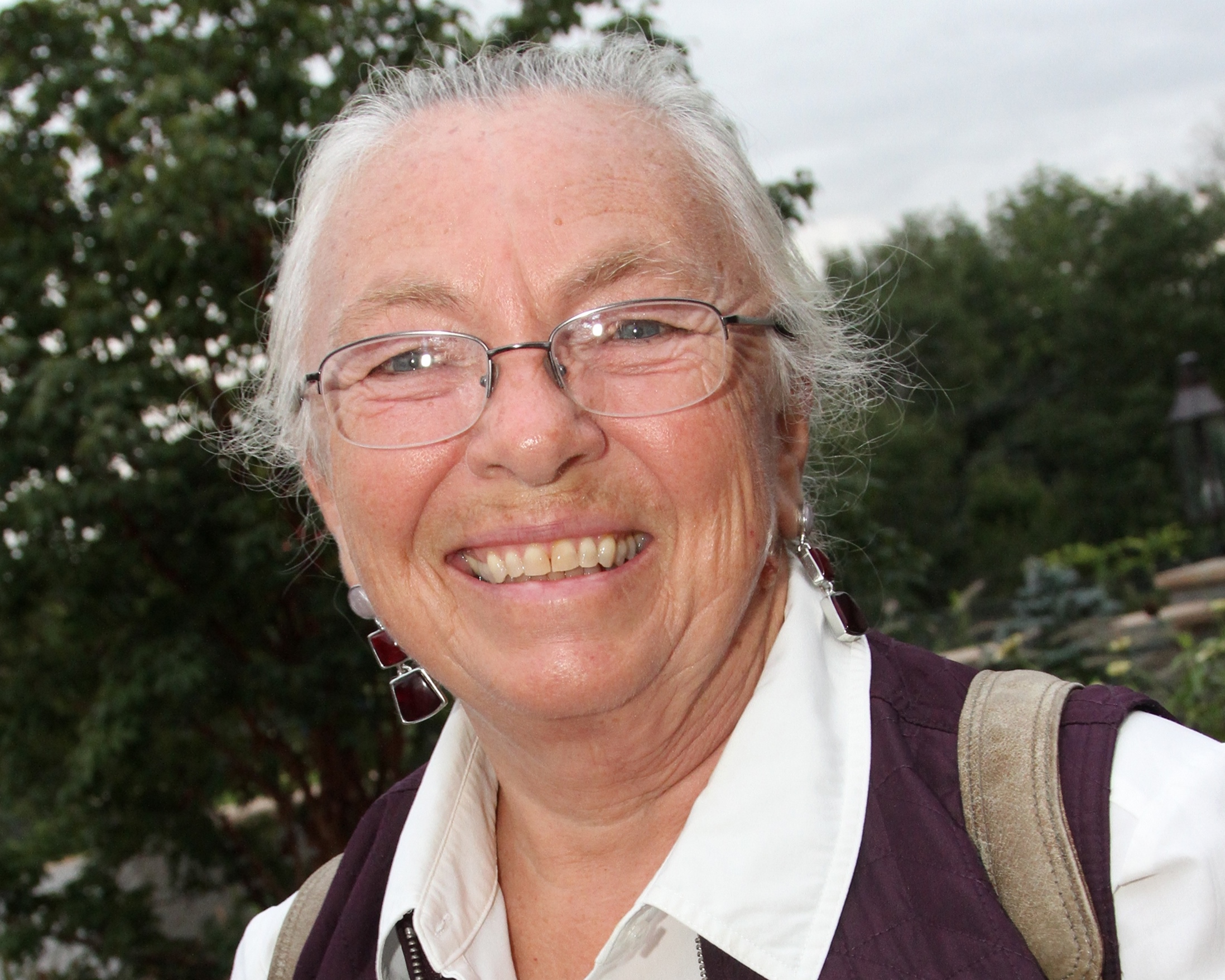2017 Life Logs, Day 318: Trip to the Harvard Museums
Date: Tuesday, November 14, 2017
Weather: Overcast and Cool; High 47, Low 34 degrees F
Location: At Home in The Studio, Falmouth, MA
Today I led a field trip to the Harvard Museums in Cambridge for a few members of the Falmouth Newcomers Teachers’ Group. I had never toured the museums, but I do have lots of experience in traveling to and from Boston. That came in handy today as I was able to accurately plan the timing of the trip. I knew it would take at least an hour to drive from our meeting place on the Cape to the Quincy Adams T-station parking garage. I knew it would then take at least 15 minutes to park, get down to the lobby to buy tickets, and catch the T. Once on the T, I knew it would be a 45-minute ride to Harvard Square and a 10 to 15-minute walk through Harvard Yard to either the Harvard Museum of Natural History or the Harvard Art Museums. So off we went. I was about 4 minutes off as we arrived in Harvard Square at 10:49 am instead of my projected 10:45 am. But I consider that a win as we had made it that far without a hitch. I led the group going to the Natural History Museum and another group member who is a retired art teacher led the group going to the Art Museums. After our morning tours, we met for lunch in a Harvard student cafeteria in a delightfully modern, all glass front science building. Some people then headed home, some of us who had toured the Museum of Natural History in the morning went to the Art Museums in the afternoon, and some people chose to spend the afternoon shopping in Harvard Square. Then at 4 pm, we met near the T-stop and started our return trip. It was a full, but informative and fun day.
I started my day in the Museum of Natural History. With the rest of the group, we started by marveling over the thousands of glass models of plants. This is world-famous collection is generally referred to as The Glass Flowers and I found it jaw-dropping–so realistic.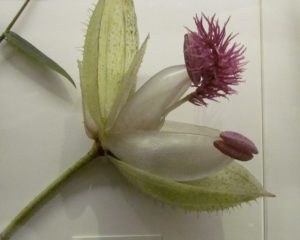
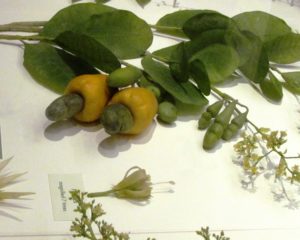
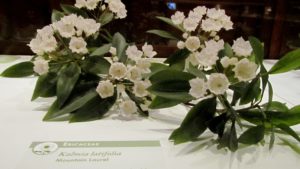 In the 1800’s, Harvard contracted with Leopold and Rudolf Blaschka, a father and son team from Dresden, Germany, to create these glass replicas. Samples and detailed drawings were gathered from around the world and this obviously extremely talented father-son team produced such life-like glass models that is hard to tell they are not alive. And there is so much more to see in this museum—meteorites from outer space and minerals and gems from around the world;
In the 1800’s, Harvard contracted with Leopold and Rudolf Blaschka, a father and son team from Dresden, Germany, to create these glass replicas. Samples and detailed drawings were gathered from around the world and this obviously extremely talented father-son team produced such life-like glass models that is hard to tell they are not alive. And there is so much more to see in this museum—meteorites from outer space and minerals and gems from around the world;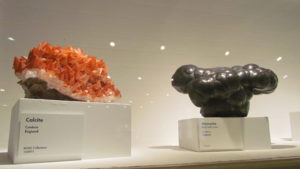 a vertebrate paleontology exhibit with fossils from the days of the dinosaurs;
a vertebrate paleontology exhibit with fossils from the days of the dinosaurs;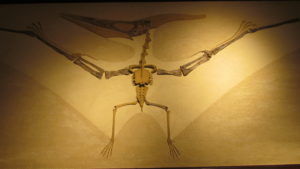 a new marine life gallery featuring sea creatures in glass and a replica of a New England oyster bed;
a new marine life gallery featuring sea creatures in glass and a replica of a New England oyster bed;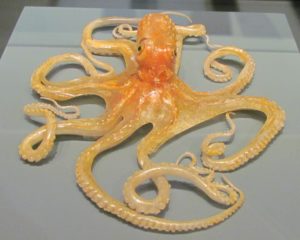
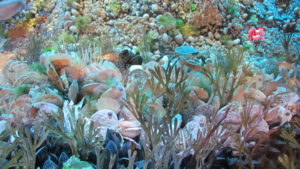 hundreds of animal replicas from around the world; and an Arthropod display with more insects than you can possibly imagine. Good friend Olivia White and I toured together, and we had fun taking photos of ourselves alongside a display of skeletons of species leading up to human life as we know it.
hundreds of animal replicas from around the world; and an Arthropod display with more insects than you can possibly imagine. Good friend Olivia White and I toured together, and we had fun taking photos of ourselves alongside a display of skeletons of species leading up to human life as we know it.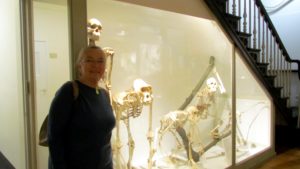 In the same facility, there is the Peabody Museum of Archaeology and Ethnology with one whole floor dedicated to early life in the Americas, Asia, Africa, Europe, and Oceana. We covered the entire collection in an hour and half. But I consider this a preview. I will return, and each time I do, I will concentrate on just one area. Lunch at the café in the new science building was great and it gave us all a chance to recharge. Then after lunch, I headed to the Art Museums. There are actually three museums in one: The Fogg, the Busch-Reisinger, and the Arthur M. Sackler on three levels. I went to the top floor and worked my way down. I love the art of ancient Greece, Rome, and Egypt, so I particularly enjoyed the Level 3 Ancient Mediterranean and Near Eastern Art.
In the same facility, there is the Peabody Museum of Archaeology and Ethnology with one whole floor dedicated to early life in the Americas, Asia, Africa, Europe, and Oceana. We covered the entire collection in an hour and half. But I consider this a preview. I will return, and each time I do, I will concentrate on just one area. Lunch at the café in the new science building was great and it gave us all a chance to recharge. Then after lunch, I headed to the Art Museums. There are actually three museums in one: The Fogg, the Busch-Reisinger, and the Arthur M. Sackler on three levels. I went to the top floor and worked my way down. I love the art of ancient Greece, Rome, and Egypt, so I particularly enjoyed the Level 3 Ancient Mediterranean and Near Eastern Art.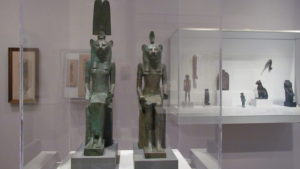 Level 2 featured Buddhist, East Asian, South Asian, Islamic Lands, Medieval art, early European art including art from the Renaissance, and European and American art from the 17th to 19th centuries. There was a lot to see in a very short period of time, but I still had the Level 1 to go. This included Early Chinese Art, Buddhist Sculpture, Modern and Contemporary Art,
Level 2 featured Buddhist, East Asian, South Asian, Islamic Lands, Medieval art, early European art including art from the Renaissance, and European and American art from the 17th to 19th centuries. There was a lot to see in a very short period of time, but I still had the Level 1 to go. This included Early Chinese Art, Buddhist Sculpture, Modern and Contemporary Art,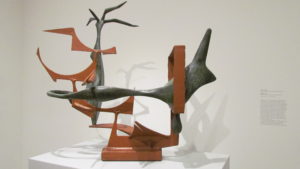 and finally the Fogg Museum featuring European Art of the 19th and 20th centuries. Here I found names with which we are all familiar:
and finally the Fogg Museum featuring European Art of the 19th and 20th centuries. Here I found names with which we are all familiar: 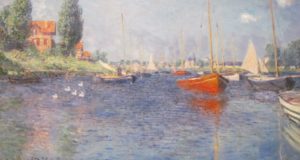
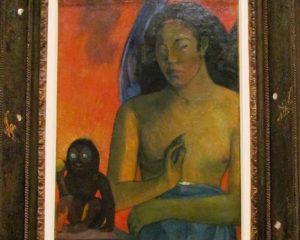 Gauguin, van Gogh, Picasso, Matisse, Monet, Manet, Renoir, Toulouse Lautrec. My very favorites of the day were from the Natural History Museum—a fossilized extinct ammonite related to the living nautilus shell
Gauguin, van Gogh, Picasso, Matisse, Monet, Manet, Renoir, Toulouse Lautrec. My very favorites of the day were from the Natural History Museum—a fossilized extinct ammonite related to the living nautilus shell and the leaves from my favorite tree, the ginkgo, done in glass.
and the leaves from my favorite tree, the ginkgo, done in glass.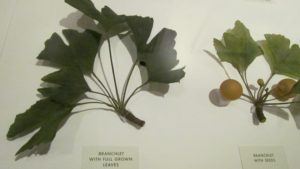 After a day like this, these old fossil bones need a rest!
After a day like this, these old fossil bones need a rest!

